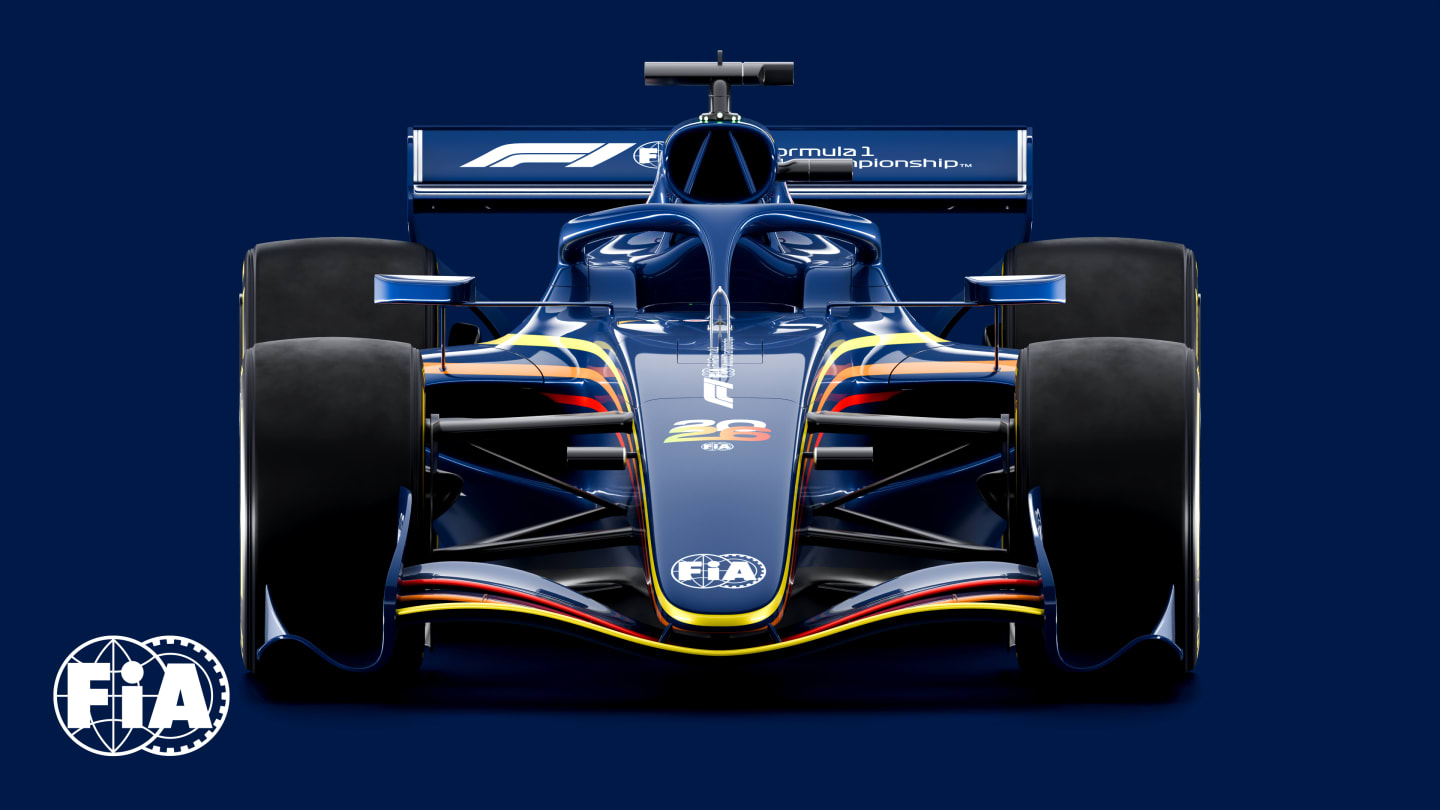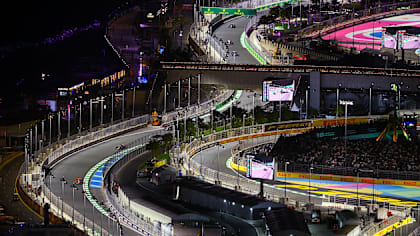
News
FIA unveils Formula 1 regulations for 2026 and beyond featuring more agile cars and active aerodynamics

Share

Formula 1’s governing body the FIA has unveiled the “agile, competitive, safer and more sustainable” set of regulations that will define the sport from 2026 and beyond.
Revised aerodynamic regulations will work in tandem with new power unit rules, which include increased battery power and the use of 100% sustainable fuels.
From 2026 onwards Formula 1 will have:
- More agile cars, which are 30kg lighter and thus better able to battle on track
- A redesigned power unit featuring increased battery power and an even split between internal combustion engine and electric power plus the use of 100% sustainable fuels
- Active aerodynamics in the form of moveable front and rear wings to allow for closer racing
- Increased overtaking opportunities through the introduction of a new system that gives drivers a short burst of additional battery power when within one second of the car in front
- Improved safety through stronger structures and even tougher tests
- Commitment from a record number of six power unit manufacturers

The FIA has unveiled the Formula 1 regulations for 2026 and beyond
The revised technical regulations have been set out by the FIA, paving the way for them to be revealed in Montreal ahead of this weekend’s Canadian Grand Prix.
The 2026 regulations are now set to be ratified by the World Motor Sport Council on June 28.
FIA Single Seater Technical Director Nikolas Tombazis said: “With this set of regulations the FIA has sought to develop a new generation of cars that are fully in touch with the DNA of Formula 1 – cars that are light, supremely fast and agile but which also remains at the cutting edge of technology, and to achieve this we worked towards what we called a ‘nimble car’ concept.
“At the centre of that vision is a redesigned power unit that features a more even split between the power derived from the internal combustion element and electrical power. On the chassis side we have managed to reduce the size and weight of the car by 30kg resulting in a much more dynamic car. In addition we are introducing two exciting new features to enhance racing – active aerodynamics to achieve very low drag on the straights and the Manual Override system that will provide drivers with an on-demand burst of battery power when close enough to the car ahead of them.
“Lighter, more powerful and more focused on driver skill, the 2026 FIA Formula One Technical Regulations have been designed to provide closer racing among drivers, increase the competition between teams and to improve the spectacle. In addition, we have opted for a higher electrical component of the power unit, a more efficient car overall, and fully sustainable fuels, as part of our drive towards a more sustainable future for our sport.”

From 2026 cars will be more agile and 30kg lighter
FIA President Mohammed Ben Sulayem said: “Today, the FIA is defining a hugely exciting future for the pinnacle of motorsport with the launch of a comprehensive new set of regulations for the 2026 FIA Formula One Championship and beyond.
“Following the publication of 2026 power unit regulations two years ago we have we have taken opportunity to redefine the chassis regulations to match the energy requirement of the new power units. Collaborating with our partners at Formula 1 and with the assistance of the sport’s 10 teams and all our stakeholders this represents a unique revision that will ensure our premier championship is even more relevant to what is happening in the world.
“The power unit regulations have already resulted in a record number of PU manufacturers committing to the sport. And now, in tandem with chassis regulations that provide for lighter, more agile cars featuring innovative aerodynamic solutions, we have created a set of regulation designed to not only improve racing but also to make the championship even more attractive to PU manufacturers, OEMs and existing competitors.
“The key features of the 2026 F1 Regulations are advanced, sustainability technology and safety. Our aim, together with Formula 1, was to produce a car that was right for the future of the sport’s elite category. We believe we have achieved that goal.”
2026 Formula 1 Regulations Explained
Power units set to deliver more power
While power from the hybrid unit has dropped from 550-560kw to 400kw, the battery element has risen significantly from 120kw to 350kw – an almost 300% increase in electric power.
The amount of energy that can be recuperated during the braking phase is doubled to 8.5 MJ per lap.
The new regulations have led to commitments from existing suppliers Ferrari, Mercedes and Renault – while enticing Honda to return and encouraging the arrival of Audi and Ford, the latter entering through a partnership with Red Bull Powertrains.
GALLERY: Check out every angle of the 2026 F1 car
Cars will be lighter and smaller
In a bid to create a more agile racing machine, the maximum wheelbase has been reduced by 200mm to 3400mm while the width has been cut by 100mm to 1900mm.
Weight has been shaved off too, with the 2026 cars set to have a minimum weight of 768kg, down 30kg on their counterparts from 2022.
The FIA also say that downforce has been reduced by 30% and drag by 55%.
Pirelli’s 18-inch wheel size introduced in 2022 will remain, however the width of the 2026-spec front tyres has been reduced by 25mm and the rears by 30mm compared to the previous generation of cars.

There will also be a redesigned power unit featuring increased battery power
New aero innovations incoming
The FIA say the 2026 cars will be switchable between two configurations, to either minimise fuel consumption or to maximise cornering performance.
All-new active aerodynamics systems, involving movable front and rear wings, will be introduced.
This will allow for greater cornering speeds with one wing angle deployed. Lower drag and greater straight-line speed will be possible when the second angle is deployed.
This new system can be used in zones like those used for the current DRS overtaking aid.
READ MORE: FIA F1 Safety and Medical Cars to be powered by sustainable fuel
The push for greater safety continues
The FIA have revised the front impact structure rules, introducing a two-stage nose design to mitigate the risk of detachment in initial impacts.
Side intrusion rules are also more stringent while protection around the driver and fuel cell area has been improved.

Improved safety features are also part of the new regulations
Sustainability is a key focus of the 2026 rules
While current Formula 1 power units are already the most efficient in the world, in F1 and the FIA’s pursuit of reaching Net Zero Carbon by 2030, the 2026 power units will run on fully sustainable fuels.
There will be a greater use of electric power in the 2026 units with a shift towards a 50% electrical and 50% thermal power distribution.
READ MORE: How sustainable fuels can benefit the world – and are more than just the future of F1
YOU MIGHT ALSO LIKE
News 'I understood why they call him the Iceman' – Antonelli opens up on experience of meeting namesake Kimi Raikkonen
News What is the weather forecast for the 2025 Saudi Arabian Grand Prix?
Live Blog AS IT HAPPENED: Follow all the build-up ahead of the Saudi Arabian Grand Prix weekend
News Piastri's manager Mark Webber reveals how Australian has stepped up against 'serious artillery' of his opposition in 2025




